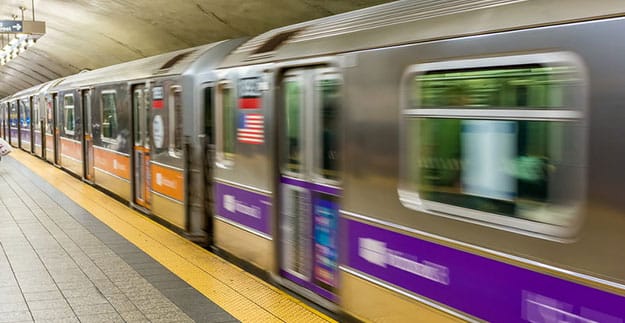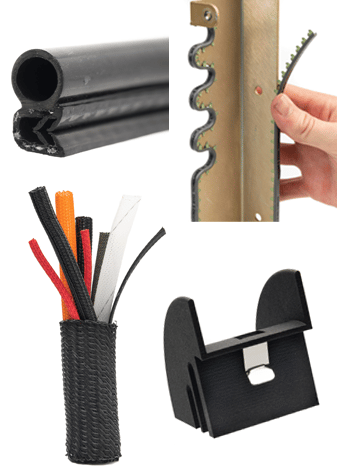2020 was without doubt a crazy year for transportation. There was no contingency plan for transport during a pandemic so systems had to make it up as they went along. They dove into emergency management fast and were supported by staff who made a fantastic commitment to go to work and be on the frontlines. In fact, public transportation staff kept us moving when everything else seemed to stop. Kudos to them.
Public transit was particularly vulnerable to Covid 19 because it is a mass people mover that was completely at odds with all the Covid restrictions. However, despite that, the effects have varied. For example:
| Washington DC, Metrorail ridership | declined 85%. |
| San Antonio, Texas VIA Metro Transit Ridership | declined 50%. |
| Boston MBTA Ridership | declined 70% |
| San Francisco MTA Ridership | declined 88% |
These are data to mid-2021. They vary because there are different levels of public transit dependence. However, you slice it though even a 50% decline is significant. There is no consolidated nationwide data but I think it’s safe to assume that all systems have been hit hard with declines somewhere in the 50-85% range.
Can ridership come back?
This is the $64,000 question.
It’s going to be a long road. VIA in San Antonio has set a goal of returning to 80% of its pre-COVID ridership by the end of March 2022. While Metro in DC in an attempt to boost ridership, is extending operating hours to midnight on weekdays and 1 a.m. on weekends, providing more frequent trains during peak hours and offering a flat $2-per-ride fee on the weekends.

Structural Changes
Covid has changed many things including work which of course mass transit supports. Ridership has been damaged as businesses are now allowing at-home work or hybrid work systems so fewer people are in the office even if they technically have an “office job”. In addition, there has been an explosion of online shopping and fewer people are venturing out on public transportation to stores to shop. As an aside the impact on malls could be devastating.
Despite the vaccines, passengers are still suffering from anxiety from overcrowding so it appears there’s not a lot of emphasis on load management right now it’s more a case of adjusting services -essentially having more buses and trains so there is space between people. It’s not so much optimization as simple provisioning, especially on the heavily trafficked routes.
Many transportation networks are making cleaning far more visible so that people can see that the cars, trains, and buses they are in are clean and safe.
As part of this change to work attitudes, people are now often working to staggered working hours which has flattened the curve in terms of when commuting peaks happen. The dust still has to settle fully on this but more and more people are working outside the 9-to-5 previously “normal” working day. The morning peak for many transit systems is now spread well past 10 am albeit at much lower ridership.
They are moving their commute – if they have one- away from peak times. The net effect is that transport systems will need to provide a more steady service across the whole day. This may allow for more balanced resource loading and could help the economics and efficiency of systems. They will need every efficiency they can get.
There is some talk of having premium fares for people who want to guarantee a double space for safety. This takes the “scowling at people” – to stop them from sitting down- to a whole new level. It might however be an explosive development in certain situations so I doubt it will happen.
Is Ridership the Goal?
Ridership and utilization is an interesting debate. Yes, it’s always good to see ridership going up but at its core, public transportation is to serve the people who want to use it even if that number is lower than where it was before.
Transit systems have taken a big financial hit already but what happens if ridership does not rebound? How low is too low? Lower ridership has budgetary, funding, and service implications as less fare revenue means more public funding…. or reduced services. There will need to be a balance struck somewhere.
Here is an illustrative quote from Michael Goldman, a Metro DC board member “We cannot continue to operate a rail system at 15% of pre-COVID ridership levels… nor can we even be satisfied with a system that’s projected at 34% of pre-COVID levels by June 2022.” What that means in practice has to be worked out.
Net Effect
The pandemic will further push public transit systems toward better route planning, balancing, and likely a better interaction between the different types of transportation rail, buses, bikes, etc.
Money will be important! Budget pressure will mean doing more with less. Transport systems will need cost savings and efficiency –for builds or repairs. They will be pushing suppliers for better prices so there will be a knock-on effect through the transit supply chain.
Transit systems and their suppliers will look for every ounce of savings and efficiency– combined of course with safety. The products used will have to be both effective and cost-effective.
How DTi can help
From DTi's perspective, we supply components to the systems that make the transit vehicles and supporting infrastructure. We supply grommet edging, seals, trim, and cable waterfalls that can create savings and efficiencies in their manufacturing.
For instance, OEM’s can cut one component cost in half with Spring-Fast® Grommet Edging as it protects wires and cables from chafing and arcing with best in class performance, a snap-on installation that lowers costs 49% vs. grommets with glue and improves efficiency 9.5x – due to fewer steps in the workflow.
Seal-Fast Edge Seals offer a cleaner, better faster way to protect your data, services, and equipment
from environmental conditions such as dust, fumes, heat/cold, and moisture. Edge seals snap on quickly and securely, and the plate seal fastens securely for an effective seal solution.
For more information on Spring-Fast® Grommet Edging go here
For more information on seals go here
See for yourself Get free samples go here

